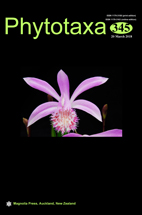Abstract
Plant studies in Extremadura (Spain) have traditionally lagged behind those of neighbouring regions, particularly Andalusia and Castile. Only a handful of 19th and early 20th century scholars dealing with the flora of Spain stayed shortly in the region (see Devesa & Ruiz 1988 for a review). A cause of this delay may be regional geologic and ecologic homogeneity: large stretches of acidic substrates sustain an overall low plant biodiversity (Devesa 1995), often considered as a mere subset of the richer and better studied plant communities that cover western Andalusia or the Gredos massif in the northeast, at the border to Castile. Extremadura’s economic marginality, manifested in a secular scarcity of infrastructures, has further hampered botanical exploration. For instance, Gandoger believed his 1904 collections to be the first ever sampled in the Sierra de Gata (at the westernmost northern Extremadura; Gandoger 1909a: 110). In fact, the Sierra de Gata was hardly visited by any botanist until the 1980s (but see Rivas Goday & Borja 1948), when work by members of the Botany Department of the University of Salamanca resulted in a PhD thesis (Valdés Franzi, unpubl.) and a series of papers about its flora (Ladero et al. 1981; Valdés Franzi 1983, 1984a, b, 1985a, b).

